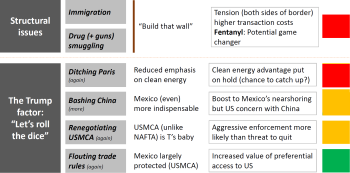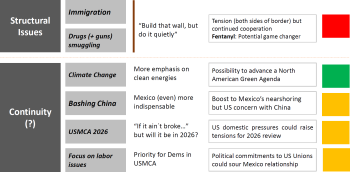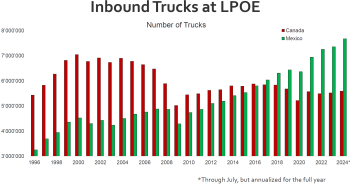Nearshoring is increasingly on the radar of the logistics sector. Expert speakers from Canada, Mexico and the United States explained why in IRU’s North American Transportation Forum (NATF) webinar on trade agreements, nearshoring and trucking.
Nearshoring – the practice of transferring business operations to a nearby country rather than a distant one – is gaining traction in North America due to a desire to create shorter and more resilient supply chains.
Mexico’s former lead negotiator for the United States-Mexico-Canada Agreement (USMCA) and partner at the AGON Economia/Derecho/Estrategia consulting firm, Kenneth Smith Ramos, said, “Since UMSCA entered into force, Mexico has become the United States’ number one trading partner. In promoting trade and investment flows, the agreement is clearly working. We’re seeing investments flow into Mexico.”
“The nearshoring phenomenon is real and we think it has a lot of room to grow, especially in Mexico. Countries such as China, as well as European countries, are now investing in Mexico and bringing their supply chains closer to the final market, which is the United States in North America,” he added.
Kenneth Smith Ramos also shared a “traffic-light” assessment on what will be the impact of a potential Donald Trump or Kamala Harris administration, particularly given the upcoming USMCA revision in 2026.


Bob Costello, Chief Economist and Senior Vice President International Trade & Security Policy at IRU member the American Trucking Associations, then unpacked the latest trucking trends in the United States.
“The data on US inbound trucks highlights the nearshoring that is going on. In the early days of the North American Free Trade Agreement, 60% or more of inbound trucks were coming from Canada. Now over the last five years, we have roughly 30% more trucks coming in from Mexico than Canada,” highlighted Bob Costello.

“The data really shows the integration of North American supply chains. You are seeing the same products on the import and export lists between the United States and Mexico as well as the United States and Canada. Another fact that stands out is the importance of trucking. Trucks transport 70% of US-Mexico trade in value, 56% in the case of Canada,” added Bob Costello.
Offering a Canadian perspective, Lak Shoan, Director of Policy and Industry Awareness Programs at IRU member the Canadian Trucking Alliance, first underscored the importance of trucking to North American trade and the need to continuously improve cross-border processes for trade between Canada and the United States.
Lak Shoan highlighted some of the items that the Canadian Trucking Alliance would like to see change during the 2026 review of USMCA.
“In terms of joint inspections and customs processes at the border, having multiple examinations done by different agencies at different times continues to be a sore point. Streamlining some of the requirements would definitely create more efficiencies at the border. But we need to focus on long-standing issues such as in-transit movements through the US, facilitating the repositioning of empty trailers and accelerating the issuance of visas for drivers who need them,” said Lak Shoan.
“The increase in fraud and cargo theft are becoming a matter of national significance in all our countries. The criminal networks behind cargo theft appear to be increasingly global. The goal here would be to introduce language into the agreement that would require all three parties to dedicate resources and adopt measures to address this issue more effectively moving forward,” he added.

